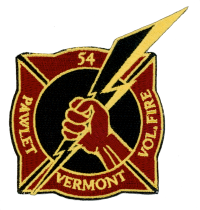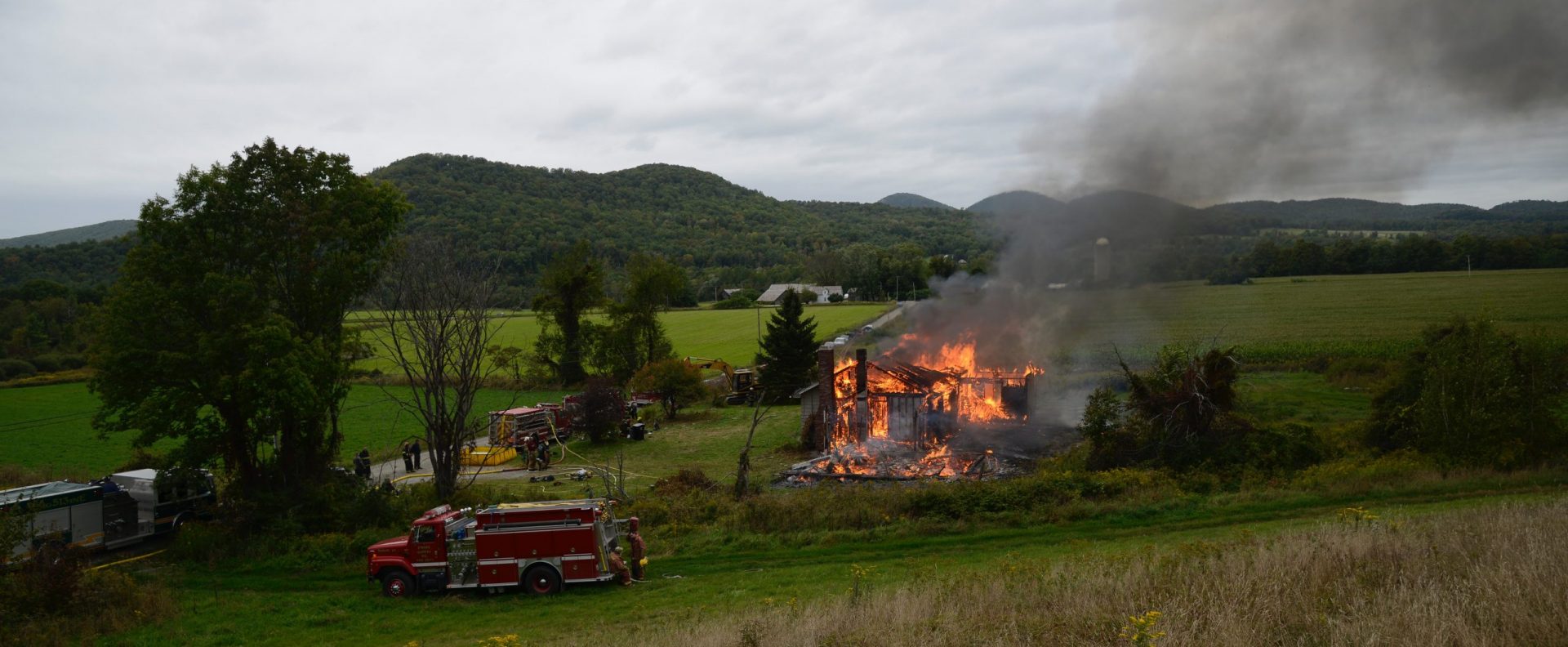Fire Safety Tips for Every Household and Business
The PVFD works hard to maintain strong fire suppression capabilities, but the very best way to put out a fire is to prevent it. If a fire doesn’t happen, there is no smoke or water damage to the home. No irreplaceable objects or beloved pets are lost. Best of all, no one ever gets hurt in a fire that doesn’t happen. Check out these simple tips for information about how to be smart about fire in your home or business.
Install and Maintain Smoke and Carbon Monoxide (CO) Detectors
Do you know that you have only two minutes to escape a fire? Fires move extremely fast in homes furnished principally with synthetic materials. Successfully escaping a house fire requires two things: early warning and a plan. Smoke detectors provide the warning. They should be located on every level of your home, and outside every sleeping area. Got ’em? Great! But make sure they work: studies show a third of installed detectors aren’t functional (that one on top of your refrigerator with the batteries removed included). Detectors reach “retirement age” after 10 years on the job. Check the back for a manufacture date. If you have no idea how old the unit is, replace it.
The next piece is having a plan. Start by gathering your family and designating a safe meeting place to evacuate to, such as a tree in the yard or the end of the driveway. This allows you to make sure everyone is safely out. The final step is to have your own family fire drill. Press the “test” button on the smoke alarm and try out your plan. Remind children of the importance of leaving immediately. You have only about two minutes to escape a home in the event of a fire, so every second counts. And remember, once you’re out, stay out! Under no circumstances should anyone ever go back into a burning building.
Escape plans are critically important for businesses, too, and having one is a requirement of VOSHA workplace safety laws. If you need help coming up with an escape plan for your business, reach out to us, we are happy to assist.
Calling for help should be part of every escape plan. Evacuate first and call 911 from a safe location. It is critically important that you know your street address and have it posted clearly on the side of the house, or the end of the driveway, or both. This information is how dispatchers will get firefighters to your house, and how firefighters will find your house when they get there. The next time you pull up, put yourself in our boots: could you find your house from a moving vehicle knowing just the street address? How about at night?
A carbon monoxide detector is another critical home safety tool: it’s alarm is often your only warning that this deadly poison is present. They should be installed outside each sleeping area of your home, and inside any bedroom that contains a fuel-burning appliance (such as a wood, wood pellet, propane, or kerosene heater or stove). CO detectors have a limited lifespan. Most stop working after about 5 years. Some alert you when they reach the end of their lives, others give no warning that they are no longer working. Check the back for a manufacture date and an expiration date. If you have no idea how old it is, replace it.
Close Before You Doze
Modern fires are very very fast, but there is already a tool in place in your house to slow it down: the humble interior door. A closed door makes a huge difference in how a fire spreads in a home. Putting a door between you and a house fire can buy you the time you need to escape safely, so sleep with the bedroom door closed. In the event of a fire, close all the doors you can. Get out right away, but close doors behind you.
Be Smart About Electrical Cords
Overloaded power strips and multi-receptacle extension cords are a common cause of house fires in our area. Old homes often have far too few outlets for modern needs, so residents rely on power strips. These devices can get hot and start fires if they are overloaded. Never daisy-chain power strips, or use high-draw appliances like heaters, toasters, or AC units with them– these appliances should be plugged directly into the wall, or used with extension cords rated for high loads. A power strip or extension cord that is getting hot to the touch is a big red flag. Never bypass or disable ground plugs. Never run an extension cord under a rug. Foot traffic can wear the wires down unnoticed, until the jackets fail and the wires rub together, causing them to spark and arc. If you have an extension cord or power strip with worn-out or damaged jacketing, it is time to retire it.
Use Care When Heating with Portable Heaters
Portable heaters are convenient, but they can cause fires and carbon monoxide poisoning if used improperly. Always keep any portable heater away from combustibles– follow manufacturer recommendations for exact distances, but three feet is a good rule of thumb. Never leave them operating unattended. Electric heaters can easily overload wiring and should be plugged directly into the wall or a properly-rated extension cord. Kerosene heaters should be fueled only when they have cooled off completely, and only with 1-K kerosene– any amount of gasoline can cause an explosion, so never use the same containers to hold kero and gas. Any fuel-burning stove gives off some carbon monoxide, so a working CO detector is a must!
Have a Pond? Consider Installing a Dry Hydrant
A dry hydrant is a non-pressurized pipe system installed beside a body of water. It allows the fire department to draft water quickly and reliably, year round. If you have a pond on your property, adding a dry hydrant can make all the difference in the event of a fire, saving firefighters precious minutes. If you have a pond that you think may be a good candidate for a dry hydrant, contact us. The fire department can help you determine if your site is suitable and may be able to secure grant funding to cover the costs associated the installation.
Keep Driveways and Private Roads Plowed
In the wintertime, the PVFD relies on homeowners to keep access to their home open. We go to great lengths to make sure our trucks can handle some snow, but the simple truth is that if we can’t get a fire truck up your driveway, we can’t fight a fire at your home. Even if you do not live in your home year-round, maintaining access 365 days a year gives us a fighting chance of saving your property in the event of fire. Plowing or shoveling out access to ponds, hydrants, and other water supplies is a tremendous help to us, and a great service to your neighbors.
Clean Your Dryer Venting
Lint accumulation in dryer vents is another common cause of house fires. The solution is simple: clean them regularly!
Wood Stove Safety
Wood stoves are very common heating appliances in Pawlet. Though cherished for their warmth, ambiance and locally-sourced fuel, wood burning appliances are common causes of fires. Running a wood-burning appliance in your home requires special safety procedures.
Keep Combustibles Away
Items kept on the mantle or on the floor too near to the stove can combust and cause a fire. Make sure nothing that can burn is within the “distance to combustibles” measurements provided by the stove manufacturer, and be wary of anything that can roll or be accidentally pushed too near to a stove.
Dispose of Ashes Properly
Fireplace and wood stove ashes can remain hot for up to four days and often deceptively seem “out,” leading to fires when the ashes are disposed of. The safe way to handle ashes is easy: shovel them into a metal container, such as a small trash can, with a tight-fitting lid. Place the container on the ground outside, away from any structures, and allow the ashes to cool for at least four days before dumping them. Never attempt to clean stove or fireplace ashes that may be warm with a vacuum, the airflow across the embers can create a fire in the vacuum filter.
Inspect and Clean Your Chimney Regularly
It is important to inspect the venting of your heating appliance regularly. Check for cracks, obstructions, or other damage. Clean out your ash pan and be on the lookout for bits of masonry or ceramic in the debris you remove, as this can indicate internal damage to the chimney. Last but not least, it is important to check regularly for creosote accumulation. This tar-like substance accumulates in the venting of your stove and in the chimney flue, and can cause a chimney fire. Chimney fires are a very dangerous situation that we see every winter here in Pawlet. These fires can damage chimneys severely, and can also escape the chimney and cause a structure fire. Regular maintenance to remove creosote accumulation is essential to prevent these fires. If you’re not sure how to inspect or clean your chimney, call a professional chimney sweep for help. There are “creosote-eater” products on the market that claim to burn off creosote in your chimney by burning the product in the stove, but these products are NOT a substitute for regular inspection. If creosote is still present after using the product, it needs to be mechanically removed by sweeping the chimney.

